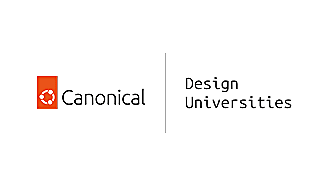Anthony Dillon
on 13 June 2014
This post is part of the series ‘Making ubuntu.com responsive‘.
Performance has always been one of the top priorities when it came to building the responsive ubuntu.com. We started with a list of performance snags and worked to improve each one as much as possible in the time we had. Here is a quick run through of the points we collected and the way we managed to improve them.
Asset caching
We now have a number of websites using our web style guide. Because of this, we needed to deliver assets on both http and secure https domains. We decided to build an asset server to support the guidelines and other sites that require asset hosting.
This gave us the ability to increase the far future expires (FFE) of each file. By doing so the file is cached by the server and not resupplied. This gives us a much faster round trip speed. But as we are still able to update a single file we cannot set the FFE too far in the future. We plan to resolve this with a new and improved assets system, which is currently under development.
The new asset system will have a internal frontend to upload a binary file. This will provide a link to the asset with a 6 character hexadecimal attached to the file name.
/ho686yst/favicon.ico
The new system restricts the ability to edit or update a file. Only upload a new one and change the link in the markup. This guarantees the asset to stay the same forever.
Minification and concatenation
We introduced a minification and concatenation step to the build of the web style guide. This saves precious bytes and reduces the number of requests performed by each page.
We use the sass ruby gem to generate minified and concatenated CSS in production. We also run the small amount of JavaScript we have through UglifyJS before delivering to production.
Compressed images
Images were the main issue when it came to performance.
We had a look at the file sizes of some of our key images (like the ones in the tablet section of the site) and were shocked to discover we hadn’t been treating our visitors’ bandwidth kindly.
After analysing a handful of images, we decided to have a look into our assets folder and flag the images that were over 100 KB as a first go.
One of the largest time consuming jobs in this project was converting all images that could to SVGs. This meant creating pictograms and illustrations as vectors from earlier PNGs. Any images that could not be recreated as a vector graphic were heavy compressed. This squeezed an alarming amount out of the original file.
We continued this for every image on the site. By doing so the total reduction across the site was 7.712MB.
Reduce required fonts
We currently load a large selection of the Ubuntu font.
<link href='//fonts.googleapis.com/css?family=Ubuntu:400,300,300italic,400italic,700,700italic%7CUbuntu+Mono' rel='stylesheet' type='text/css' />
The designers are exploring the patterns of the present and ideal future to discover unneeded types. Since the move from normal font weight to light a few months ago as our base font style, we rarely use the bold weight (700) anymore, resorting to normal (400) for highlighting text.
Once we determine which weights we can drop, we will be able to make significant savings, as seen below:
 Reducing loaded fonts: before and after
Reducing loaded fonts: before and after
Using SVG
Taking the leap to SVGs over PNG caused a number of issues. We decided to load SVGs as opposed to inline SVGs to keep our markup clean and easy to read and update. This meant we needed to provide four different coloured images for each pictogram.

We introduced Modernizr to give us an easy way to detect browsers that do not support SVGs and replace the image with PNGs of the same path and name.
Remove unnecessary enhancements
We explored a parallaxing effect for our site’s background with JavaScript. With worked well on normal resolution screens but lagged on retina displays, so we decided not do it and set the background position to static instead — user experience is always paramount and trumps visual enhancements.
Future improvements
One of the things in our roadmap is to remove unused styles remaining in the stylesheets. There are a number of solutions for this such as grunt-uncss.
Conclusion
There is still a lot to do but we have definitely broken the back of the work to steer ubuntu.com in the right direction. The aim is to push the site up to 90+ in the speed page tests in the next wave of updates.
Read the next post in this series: “Making ubuntu.com responsive: JavaScript considerations”



